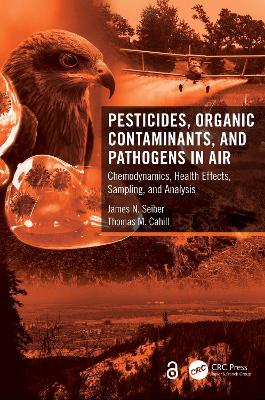The air is an important but largely unrecognized source of contaminant fate in the environment, including transport of pesticides and contaminants to nontarget areas and exposures for people and wildlife. This book summarizes and places in perspective the potential transport, transformation, and health implications of pesticides and contaminants in air, including the air we breathe. It delves into the hypothesis that the atmosphere is the most significant environmental compartment affecting the overall transport and fate of many classes of environmental contaminants.
The authors draw parallels between sampling, analysis, and impact of airborne toxics and particulate matter with the COVID-19 pandemic. Airborne viruses and fine particulate matter, which are of similar size, have remarkable parallels in how they are transmitted and accumulated in the respiratory tract.
FEATURES
- Assesses exposures of people and wildlife to airborne chemicals
- Includes case study applications, with relevant data summarized for pesticides and contaminants in air
- Discusses approaches to modeling pesticides’ and contaminants’ dispersion and fate in air
- Includes an assessment of the physicochemical properties of pesticides and contaminants that influence sampling and atmospheric mobility and fate
The authors are global experts in air contaminant research, and this book is well organized and helpful for people interested in regulatory, health, and other topics related to pesticides and contaminants in air.
James N. Seiber is a Professor Emeritus at the University of California, Davis.
Thomas M. Cahill is an Associate Professor in the School of Mathematical and Natural Sciences at Arizona State University.
- ISBN10 0367485672
- ISBN13 9780367485672
- Publish Date 8 October 2021 (first published 7 October 2021)
- Publish Status Active
- Publish Country GB
- Publisher Taylor & Francis Ltd
- Imprint CRC Press
- Format Hardcover
- Pages 230
- Language English
